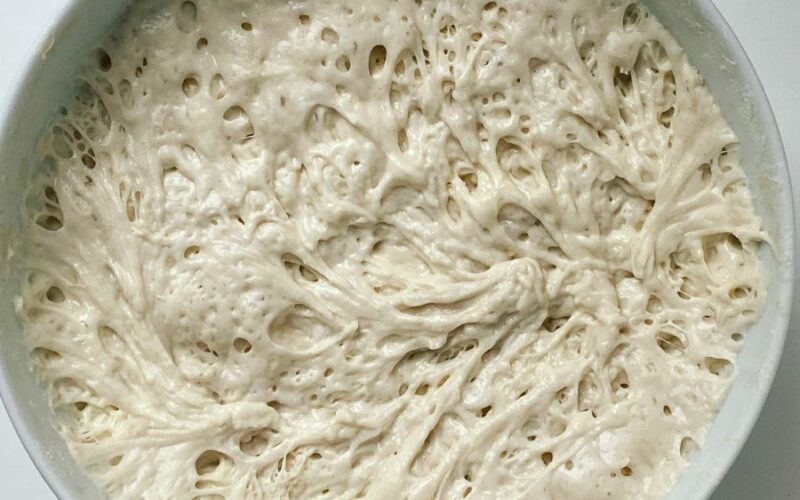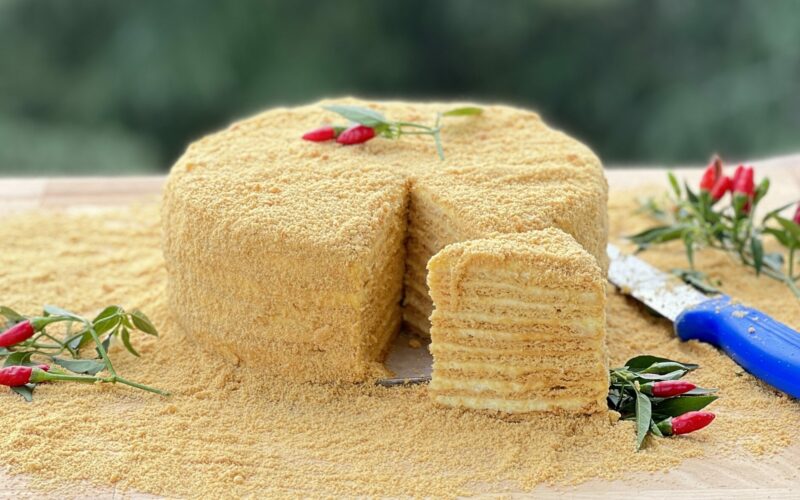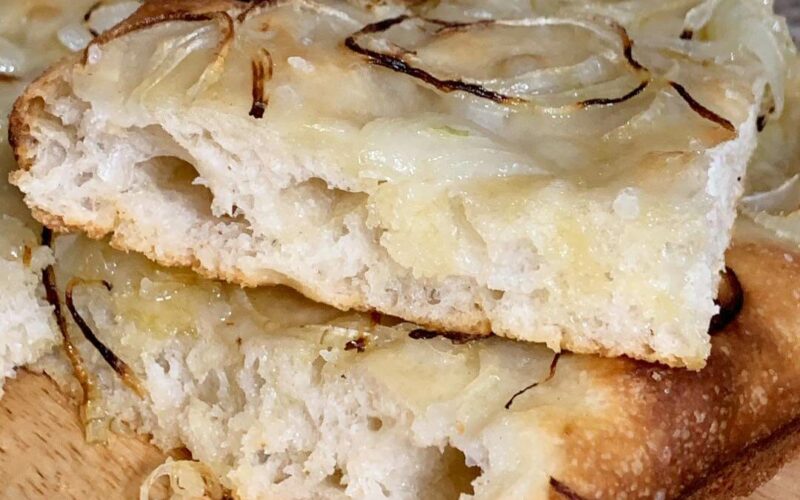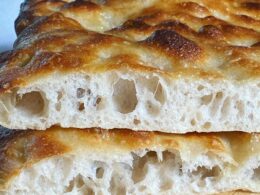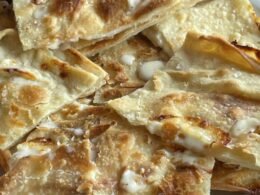There are many ways to prepare and ferment dough, but undoubtedly one of the healthiest methods is using a Biga.
Biga is a dough made from flour, water, and a minimal amount of yeast or starter, which possesses unique nutritional properties.
Let’s go step by step!
First, let’s understand what Biga is. The secret lies in its name. The term “Biga” refers to a horse-drawn vehicle, typically a two-horse chariot, used in ancient Rome.
Our Biga serves the same purpose: it “pulls” the dough and improves the elasticity and flavor of the final fermented product. This happens through a long fermentation process (16 to 48 hours), and the use of strong flour makes the dough more resilient and elastic. As a result, the gluten network in the final dough becomes stronger.
But what are the advantages of using a Biga starter?
- Enhanced Flavor: The prolonged fermentation process of the Biga allows for the development of complex flavors in the dough. It adds a subtle tanginess and depth of taste to the final baked goods, making them more delicious and satisfying.
- Improved Texture: The presence of a Biga starter contributes to a light and airy texture in the baked goods. It enhances the structure and crumb of bread, giving it a desirable chewiness and softness.
- Extended Shelf Life: Bread made with a Biga starter tends to have a longer shelf life compared to bread made with other methods. The fermentation process and acidity produced by the starter help to inhibit the growth of mold and keep the bread fresh for a longer period.
- Health Benefits: The natural fermentation process in the Biga starter promotes the breakdown of gluten and other proteins in the dough, making it more digestible for individuals with gluten sensitivity or intolerance. It also increases the availability of nutrients and beneficial bacteria in the bread.
- Artisanal Quality: Using a Biga starter adds a touch of artisanal quality to your bread and other baked goods. It mimics traditional methods of bread making, providing a connection to the rich culinary heritage and craftsmanship.
- Overall, the use of a Biga starter enhances the flavor, texture, and nutritional profile of baked goods, resulting in a more satisfying and wholesome culinary experience.
The classic formula for making a Biga is as follows:
Using yeast:
495g Flour
250g Water
5g Fresh yeast
Using a starter:
10g Refreshed starter
100g Flour
70g Water
How do we prepare the biga:
- Dissolve the yeast or starter in water and add sifted flour with a pinch of salt (a small amount of salt will help your biga, while too much salt will ruin it).
- Knead the dough for no more than 2-3 minutes.
- The dough will be quite dry and uneven. Then shape it into a ball, place it in a container, and cover it with plastic wrap.
- The biga should mature for a period of time that usually ranges between 16 hours and a maximum of 48 hours. I let my biga mature at room temperature for approximately 16 hours, but you can keep it in the refrigerator for the first 24 hours and then let it rest for another 24 hours at room temperature. Much depends on how your biga reacts. It may not show much activity for 16 hours and then rise within a few hours, but it can also happen much faster.
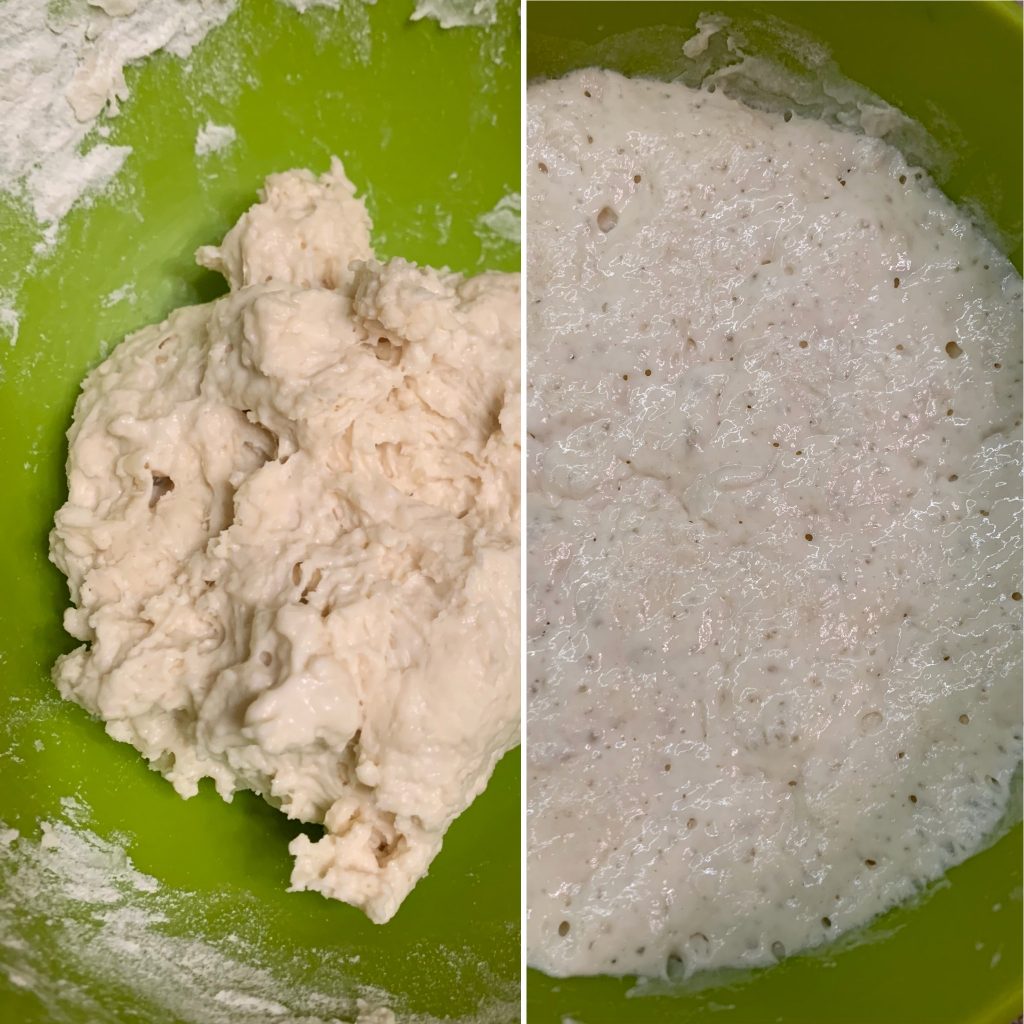
Now let’s also figure out what to do with the remaining biga.
As we already know, the biga matures for 24-48 hours at room temperature. Some people may keep the biga in the refrigerator for the first 24 hours and then let it rest at room temperature for another 24 hours. But if you haven’t used your biga within approximately 60 hours, you should store it in the refrigerator on the bottom shelf, just like a starter.
Transfer the biga to a glass container and cover it tightly. In this state, the biga can be stored for weeks or even longer. But keep an eye on it. If the biga has changed in color and has an excessively strong sour smell, it’s time to prepare a new one.
Unlike a starter, you don’t need to refresh the biga weekly. The biga is refreshed only before kneading the dough. This needs to be done 24 hours before kneading. The biga should triple in size during these 24 hours.
When storing the biga in the refrigerator for a longer period, it will develop a very sticky consistency and, of course, have a slightly sour and even alcoholic smell. This is normal. If you still decide to store the biga in the refrigerator, I recommend taking a piece of the refreshed biga after 24 hours and storing the biga again in the refrigerator, discarding the old portion. With each refreshment, the biga will become stronger.
- 5g Biga
- 70g Water (not exceeding 21 degrees Celsius)
- 100g Flour
- A tiny pinch of salt (0.1g)
- Dissolve the biga in water and separately mix the dry ingredients.
- Knead all the ingredients together and let it rise at room temperature for approximately 24 hours.
- Once the dough has risen, the biga is ready to be used.

